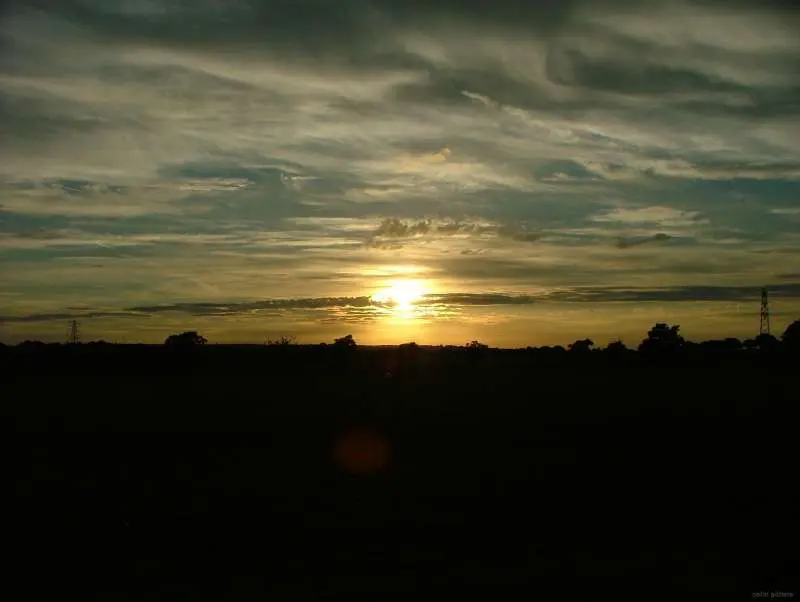Genesis is a strange book for many people. It’s a story of origins, and it introduces the miraculous power of God—which makes many secularists and skeptics uncomfortable. The opening eleven chapters of Genesis are seen as utterly ridiculous, and many people are confused by the apparent contradiction of Genesis chapters 1 and 2—the first chapter ends with the creation of man, and all of the sudden the second chapter talks about man being created. Are these two different stories of two separate creations?
In Genesis chapter 1, humankind is created on the sixth day of creation—after the animals and after the rest of creation has been made. Here (Genesis 1:26-31), the Bible seemingly glosses over the creation of woman from man’s ribs, and then focuses on God commanding mankind to multiple and subdue the creation. Then the sixth day ends.
However, in the next chapter, Genesis 2, the account of creation looks different. Genesis 2:4-25 is a very detailed account of the creation of man and the creation of woman from man and their role in the Garden of Eden. Chapter 2 begins with the declaration that God created man when no plants had yet sprung up (Genesis 1 claims that plants were created on Day 3) and there wasn’t even rain. God planted the Garden of Eden and caused trees to spring up and plopped a man right there. At around this time, this lonely man, Adam, searched the animals for a suitable helper. Bears, tigers, aardvarks, and caterpillars didn’t cut it. Cue God, who caused Adam to fall into a deep sleep and then He took one of his rips and formed Eve—the first woman.
Since we think of books as always being in chronological order—the first thing goes first, the second thing goes second—it’s confusing to see the sixth day of creation played out, then the seventh day of rest and all of the sudden mankind is being created like what happened on the sixth day. Here’s the deal—on closer examination, this creation is not a second creation, but a detailed look at what happened on day six.
Why Would Genesis Be Out of Order?
The Genesis 2 account of the creation of man doesn’t spell out that it takes place on the sixth day of creation, but when examined it’s easy to see this is merely a more descriptive version of an event quickly summarized over for the sake of time.
In Genesis 1, it’s really easy to see the literary patterns. Each creation day is bookended by “And God said” and then “there was evening and morning” and then a mention of the numerical day. Each day isn’t terribly exhaustive and day six already goes into more detail than the other days. In order to not interrupt this flow of the story, it was necessary to include more information in the next chapter.
It makes sense that the creation of man gets a bigger better spotlight after being simplified for style in Genesis 1. Genesis 2 is extremely important—it sets up the relationship between God and man, it establishes man’s relationship with the creation, and it defines and institutes marriage. The summary of the goings-on of day six in Genesis 1simply didn’t include these important points because Genesis 1 is concerned with chronology, history, and the origins of the universe (And is perhaps concerned with refuting pagan creation myths). Genesis 2 is the move from a focus on creation, to a focus on humans and their relationship with God (The rest of the Bible).
This switch of purpose may also indicate a switch of perspective. It has been suggested that when Moses edited Genesis he used various clay tablets that had been written by various witnesses of these events, thus solving the issue that Moses didn’t observe the creation account to Joseph’s life as told in Genesis. The evidence for a series of eye-witness accounts is the use of the recurring phrase in Genesis “these are the generations of” then followed by an author/witness/authority on the preceding events. The word for generations, toledoth ( תוֹדְלוֹתּ ) also can be translated “origins of” or “account of” or “book of” and it is found 11 times in Genesis. In 1946, P.J Wiseman discovered that many ancient Sumerian and Babylonian clay tablet records use toledoth-like statements: the text comes without a heading, each tablet ends with a statement referring to all that was written before, and the text ends with a reference to the author or owner of the work.
We see this same pattern that Wiseman observed in the Bible nine times, each referencing the previous section as the work or account of a particular patriarch. This would split Genesis into about nine parts. Moses may have translated these tablets passed down from generation to generation by either deciphering the most likely logographic text (each symbol/picture represent a word not a letter) or being powered by the Holy Spirit. There are unsupported suggestions that the Pre-Babel language was Hebrew, so there is a small chance these nine accounts could have been written in Moses’ native language.
As it relates to the two chapter of Genesis, these two accounts could tell the same story twice simply because they have different authors—God and Adam. Genesis 2:4 verse concludes the creation account with:
“These are the generations of the heavens and the earth when they were created, in the day that the Lord God made the earth and the heavens.”
This would refer back to the previous account of creation and traditionally the toledoth would give the former text a name. In this case, Genesis 1 and the first four verse of Genesis 2, would be called the Account of the Heaves and the Earth. Since it doesn’t offer an author, the most logical assumption is that if the toledoth theory is correct and Genesis was nine tablets, then the first tablet was written by God. Either by his own hand as the Ten Commandments were made, or by having Adam jot down some logographic wedges in some clay, God could have decided to record the creation of the universe—an event only He and the angels witnessed— to be passed down.
In that case, Adam would have written the next tablet. Genesis 5:1 ends the preceding verses with recognizing that “this is the book of the generations of Adam. When God created man, he made him in the likeness of God.” This would have ended the second tablet from Genesis 2:5 to 5:1. It’s a possibility the two accounts of man’s creation were written by two different people from two perspectives (One perspective as the Creator, the other perspective as the Creation), which Moses took and edited into the first part of Genesis we know and love. This explanation supports what we already know—the two accounts of creation are describing the same creation event for two different purposes.
What Skeptics Say (And Why They’re Wrong)
Some skeptics claim that the differences in style and content of Genesis 1 and 2 suggest a different author for each chapter (This may be so, according to the Toledoth Theory as explained above). Believing in a view known as the Documentary Hypothesis, the claim is that the first five books of the Bible (Genesis, Exodus, Leviticus, Numbers, and Deuteronomy) have been complied or created from outside sources and adapted to fit Jewish culture at a time way after the events. This view is saying that the first big chunk of the Bible is not historically accurate, but man’s creation to attempt to justify and unify their society. Obviously, this undermines the basic authority of Scripture.
One of their reasons that Genesis 1 and 2 had two different authors is the different names for God used. Genesis 1 uses the name for God ‘Elohim which is translated as God in the English Bible. Genesis 2 uses the name compound ‘Elohim-Yahweh, translated commonly as the LORD God. This addition of Yahweh (or literally YHWH) leads some supposed scholars to believe that an individual known as the Jahwist (Named from the German word for Yahweh) wrote these parts, where an individual known as the Elohist devised the portions of the early Hebrew Bible where ‘Elohim is the name for God used.
Firstly, the difference in name used has nothing to say about authorship, especially considering that ‘Elohim is attached with Yahweh in Genesis 2, but is still supposed to be attributed to the unnamed hypothetical Jahwist. Commonly in ancient cultures, the same god had different names, and these names could reflect different personality traits or attributes of the deity. It’s quite likely that the different names of God used reflect different personalities and a different sort of relationship, as was common in ancient times in neighboring regions. Yahweh is a very sacred name, perhaps demonstrating the sacred relationship between God and his creation in Genesis 2. Elohim is less personal and fits better in the strictly historical account of the creation week.
Still, those advocating a contradiction between these two creation accounts suggest that they can’t be the same story because the order of creation is different. Does the Genesis 2 version say something dramatically different from the creation week account?
It almost appears that plants were created after people in Genesis 2; unlike the Genesis 1 account that explains plants being made on Day 3 (Genesis 1:11-13), and man on Day 6 (Genesis 1:26-28). Genesis 2:5-7a says “When no bush of the field was yet in the land and no small plant of the field had yet sprung up—for the Lord God had not caused it to rain on the land, and there was no man to work the ground, and a mist was going up from the land and was watering the whole face of the ground— then the Lord God formed the man of dust”. No bush or plant of the field had sprung up yet? But plants were supposed to be around before man entered the scene!
Examine what these verses call the plants: “bush of the field” and “plant of the field.” These words are different, more specific, than the vegetation created on Day 3. The term “of the field” refers to agriculture, and the reference to the lack of rain in the next verse further hits home the true message: The rainy season hadn’t come yet, so crops or agricultural plants had not sprung up (And nobody was tilling the soil to make the crops grow). These verses aren’t referring to the creation of plants, but are actually giving us a time of the year, when the creation of man took place.
Another alleged contradiction is that Genesis 2 says animals were created after Adam and before Eve, where Genesis 1 says animals were created before man and woman. This misunderstanding also stems from not looking closely at the text.
More modern versions of the Bible such as the ESV and NIV have rightfully resolved the contradiction. Versions such as the King James Version are what get people confused. Genesis 2:18-19 in the KJV says: “And the Lord God said, It is not good that the man should be alone; I will make him an help meet for him. And out of the ground the Lord God formed every beast of the field, and every fowl of the air; and brought them unto Adam to see what he would call them: and whatsoever Adam called every living creature, that was the name thereof.”
The previous text says “the Lord God formed every beast of the field, and every fowl of the air” and it’s that word “formed” which gets people thinking these creatures where created right then and there—after man, and before women unlike what the chapter before outlined.
However, “formed” gives a false meaning about the text. In Hebrew, the verb tense depends on the context of the verb. As the ESV and NIV correctly translate it, Genesis 2:19 should convey the past tensed verse read, “had formed”. Genesis 2:19 in the ESV reads, “Now out of the ground the Lord God had formed every beast of the field and every bird of the heavens and brought them to the man to see what he would call them.” The correct interpretation of the verse as Hebrew readers would understand it is that at a previous time, God had created the animals.
It is only at this time in the story that animals are needed on the set, so they are brought on. It’s important to remember that the purpose of Genesis 2 is to highlight man’s creation—all other creatures and plants take a back seat. The beasts and the birds, and the bushes and the plants had their spotlights already. Now it’s man’s time to shine.
Conclusion
Now, it’s clear that Genesis 1 and 2 are not at odds. The allegations against them do not hold up, and are merely invented stories to discredit the Biblical account when secular historical thoughts are made to trump God’s Word. Though the answers to the supposed contradictions may not be liked because of bias, there are, nonetheless, answers. When the Bible is put on trial for contradictions in its testimony, the majority of the time the whole thing is a misunderstanding of purpose, literary devices, or of the original Hebrew. God’s Word remains true.
* Batten, Don. “Genesis Contradictions.” Creation. Creation Ministries International, 1996. Web. 30 Sept. 2014. <http://creation.com/genesis-contradictions>.
* ” תוֹדְלוֹתּ . 8435 (toledoth).” Bible Hub. Online Parallel Bible Project, Web. 1 Oct. 2014. <http://biblehub.com/hebrew/strongs_8435.htm>.
* Taylor, Charles V. “Who Wrote Genesis? Are the Toledoth Colophons?” Journal of Creation 8.2 (1994): 204-211. Creation Ministries International. Web. 11 Oct. 2014. <http://creation.com/who-wrote-genesis-are-the-toledothcolophons>.








Love the article cleared up a lot of things for me. I have a question about Torah that I get from Christians and Atheist alike on this chapter. Gen 1-29 makes it out that we were only allowed to eat vegetables initially, well how can that be if YHWH is the same yesterday today and forever.
Chapter 1 and 2 are different. Genesis 1 speaks of the spiritual realm. Chapter 2 speaks of the spiritual and natural realm, all is good. Until the fall of man chapter 3. It is all in God’s wonderful plan.
I agree with Emily – so the reason why plants and animals dont appear in Ch 1 is they dont have the spirirt of God in them as does Man. Man is spirit first and foremost. He is human – but not god, God, or Gods (plural)…as some literalists would use to discredit this approach. Any way you look at Chapter one you cannot deny that God is A: The Spirit and B: The Creator C: The Creator of Spiritual Beings D: His essence is Divine and immutable. E: He has power
And in Chapter 2 God uses His attributes mentioned above to animate his Creation into life as we know it.
So the author is correct in a sense.. that the Sixth Day of Chapter 1 is Summarized in Chapter 2!
But Emily is more accurate in my estimation, in that Gen. 2 is the manifested creation while in Gen, 1 we see the truest creation which is spiritual. The best thing to read in this regard is the book of Galatians, followed by the Book of Romans.